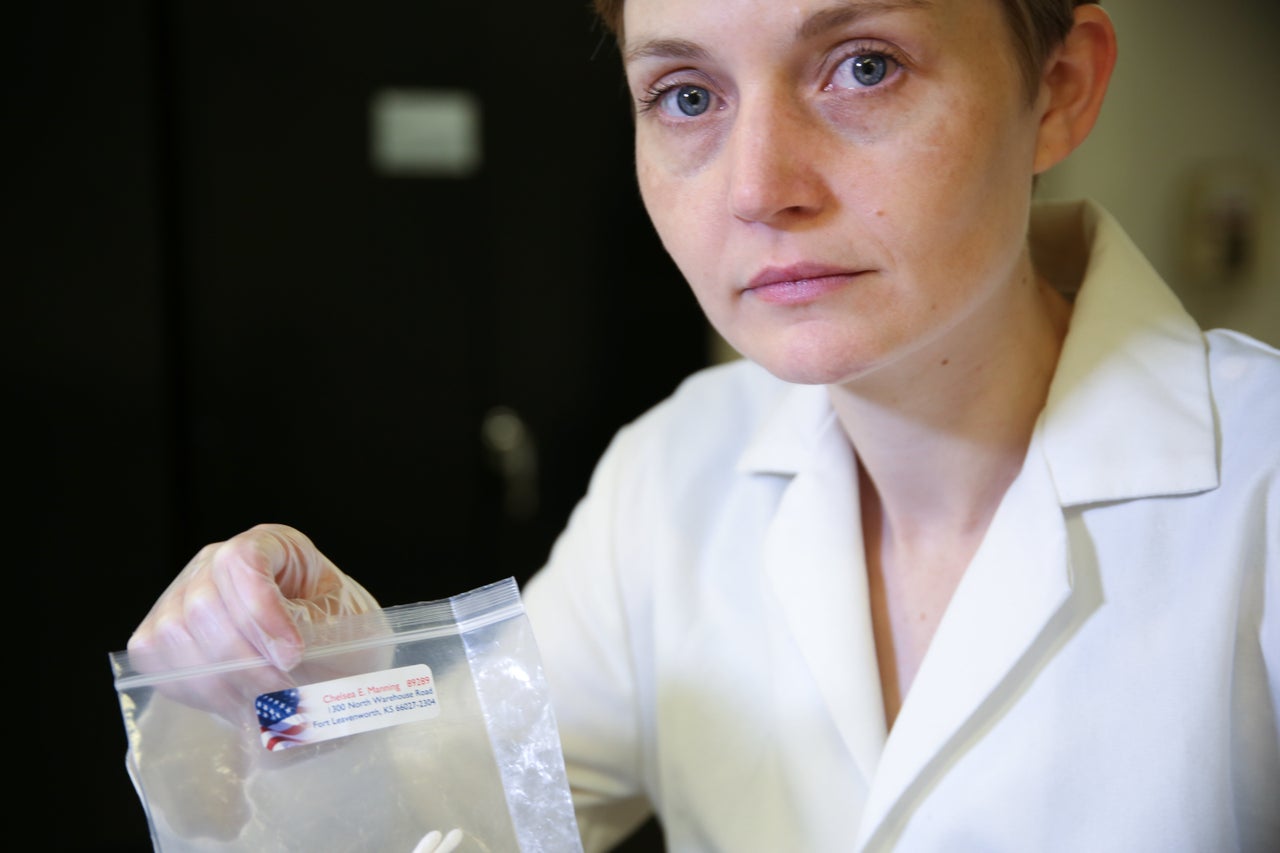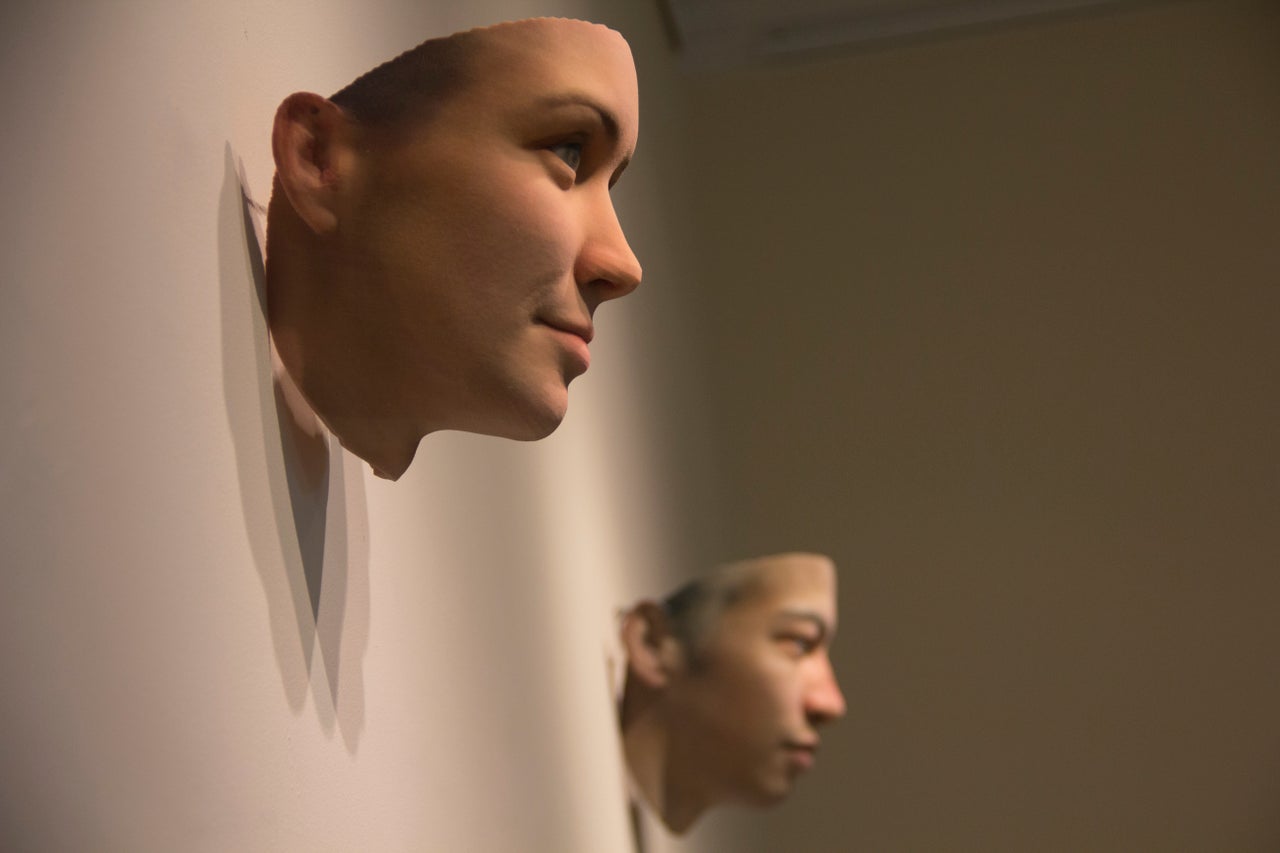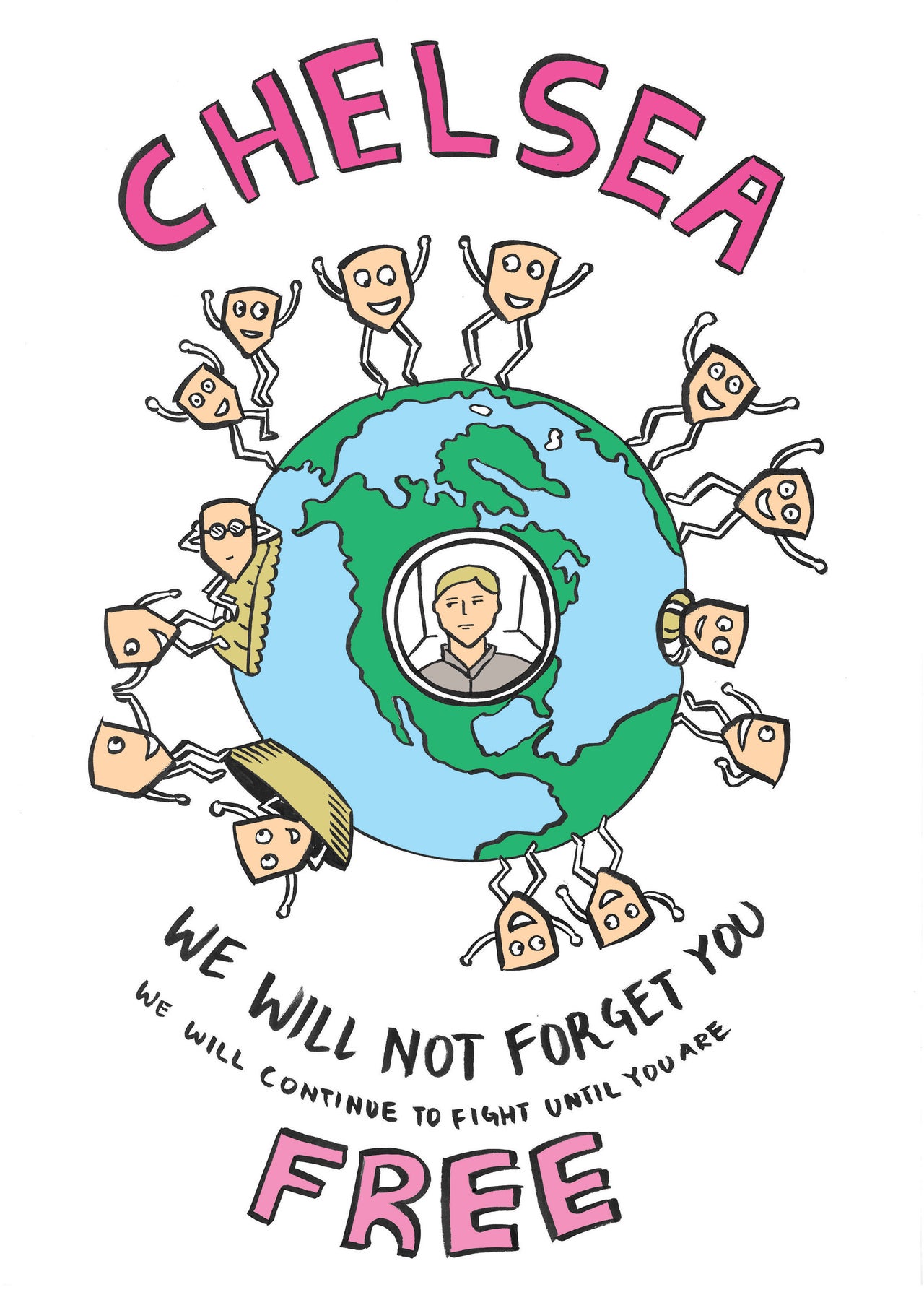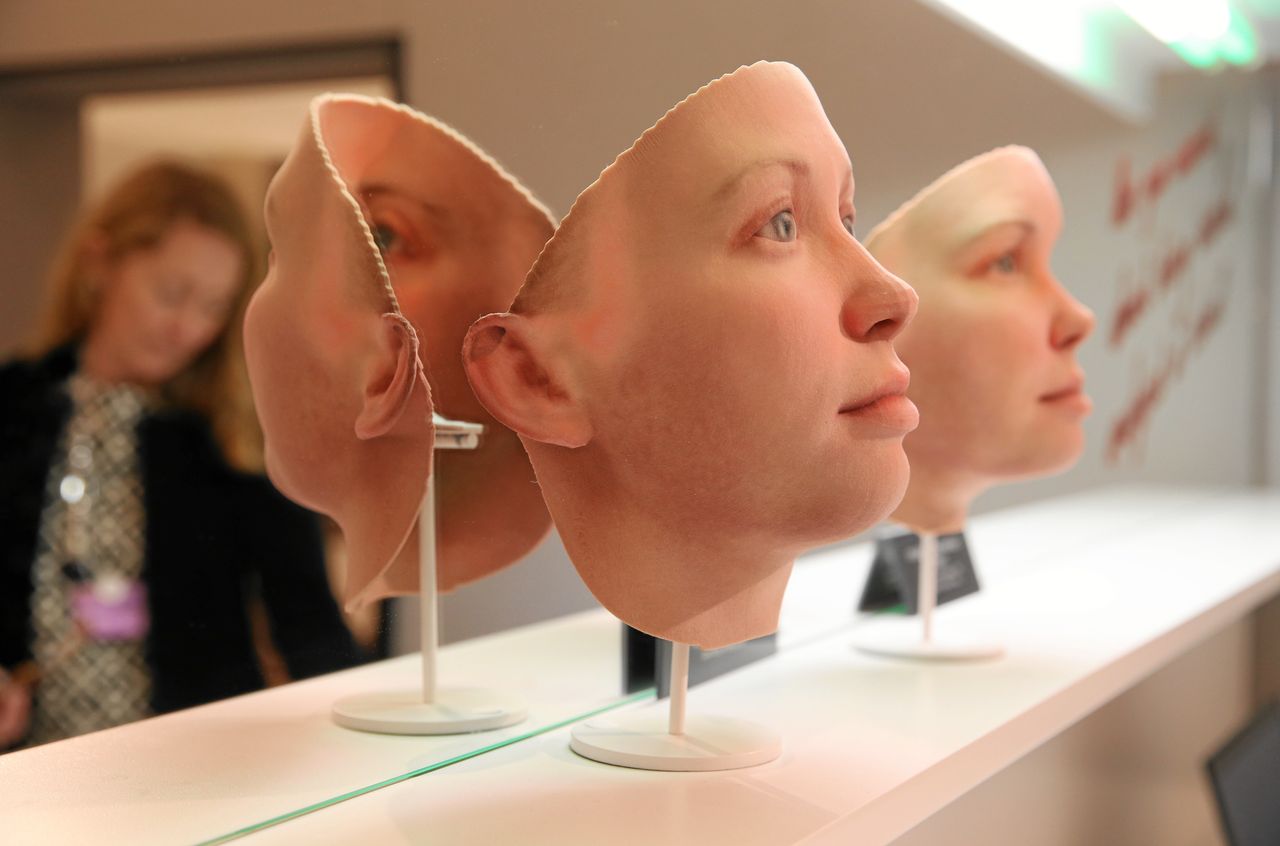As an artist and a scientist, Heather Dewey-Hagborg is used to questioning where science and technology are headed and how their trajectories might affect our lives.
“Making people uncomfortable is really squarely the point of my work,” she wrote in an email to HuffPost. For example, her project “Stranger Visions” consists of a series of portraits based solely on human DNA she’d gathered from discarded items found in New York City ― think: hair, cigarettes, gum.
Most recently, Dewey-Hagborg has been collaborating with a rather unlikely partner: Chelsea Manning. Together, they’ve created a series of “portrait masks” derived from Manning’s DNA, retrieved while she was incarcerated and undergoing hormone replacement therapy.
“I guess [they’re] a bit creepy on purpose,” she explained of the portraits, on view this August at Fridman Gallery in New York City. “But hopefully a creepiness that provokes cultural reflection.”

As much of the world knows by now, Manning shot to fame in 2013 after she published thousands of secret documents related to the Iraq and Afghanistan wars on Wikileaks, unveiling disturbing accounts of torture and abuse by U.S. soldiers. Manning was sentenced to 35 years in prison, the longest sentence ever handed down to a government whistleblower.
The day after she was sentenced, Chelsea, then known as Bradley Manning and presenting as male, came out as transgender. “I want everyone to know the real me,” her statement read. “I am Chelsea Manning. I am a female. Given the way that I feel, and have felt since childhood, I want to begin hormone therapy as soon as possible.” For years, Manning lived behind bars in an all-male military prison at Fort Leavenworth, Kansas. After suing the army with the support of the ACLU, Manning became the first person to receive hormone replacement therapy in a military prison.
Yet Manning was prohibited from taking photographs in prison, and as such, her image was hidden from public view for the entirety of her incarceration. For Manning, this reality was not just an inconvenience, but a denial of her very humanity. “Prisons try very hard to make us inhuman and unreal by denying our image,” she told Boing Boing in 2016. “And thus our existence, to the rest of the world. Imagery has become a kind of proof of existence. Just consider the online refrain ‘pics or it didn’t happen.’”
And that’s where Dewey-Hagborg came in.

In 2012 and 2013, Dewey-Haborg began extracting DNA samples from detritus around NYC. She then analyzed the samples using a DNA phenotyping process often used by law enforcement to create forensic profiles of criminal suspects. Dewey-Haborg used the genetic information she found to generate 3D-printed, life-size “portrait masks” of anonymous people she’d never met.
In 2015, Paper Magazine commissioned Dewey-Hagborg to conduct a similar biological portrait process, this time with Manning. From prison, Manning supplied DNA samples by mailing packages of cheek swabs and hair clippings, for a project dubbed “Probably Chelsea.” What Manning’s DNA could not illuminate, however, was her transition.
“Of course DNA is important, vital,” Dewey-Hagborg explained. “But it is just a portion of what makes us who we are. We are increasingly learning how significant epigenetics is, and of course environment is unquestionably a major, if not the major, thing shaping us. What ‘Probably Chelsea’ does is show just how many ways your DNA can be interpreted, or read as data.”
For her earlier portraits, Dewey-Hagborg relied on chromosomes to predict whether her subjects were male or female. For Manning, “there were two options that I thought of,” Dewey-Hagborg recounted. “I could leave the sex parameter out entirely. There really wasn’t any reason to deem it worthy of analyzing. Or we could go with self-identified gender over genetic sex.”
Dewey-Hagborg created two distinct “portrait masks” of Manning, one that was “algorithmically gender neutral” and one “algorithmically female,” which she placed side by side. The two versions were created using morphable models that can be adjusted to look “more male,” “neutral,” or “more female” ― generalized from 3D scans of people’s actual faces.
But what truly constitutes a “female face” ― and how much of this aesthetic relates to biological chromosomes? These are some of the questions Dewey-Hagborg hopes to raise. “Things like gender and race become problematic because they rely on very simplistic kinds of stereotypes,” she told Paper.

Dewey-Hagborg began corresponding with Manning, whom she described as “incredibly positive,” in 2015. They worked together, along with illustrator Shoili Kanungo, on a comic book called “Suppressed Images,” imagining a scenario in which Manning’s sentence was cut short and she could stand face-to-face with her own portrait. In January of 2017, President Barack Obama officially commuted Manning’s sentence; she was released in May of the same year. She will now be able to view her portraits in person this August.
With biotechnology rapidly advancing, its impact can be seen in everything from reproductive to genetic engineering, Dewey-Hagborg hopes her work shines a cautionary light on the science’s shortcomings.
“Art has an important role here,” she explained, “not just to be educational and show how science works, but to be provocative and critical, to show how it will work on us and through us and with us. To ask questions about how new science and technology will impact our lives.”
Fridman Gallery curator Roddy Schrock seconded Dewey-Hagborg’s trust in art to cast a critical eye on technological advances with a particular agenda in mind. “Our relationship to technology typically flickers between hope and disappointment. Chelsea and Heather, through the work in this exhibition, help us remember to act from a place of hope.”

As much as the collaboration between Dewey-Hagborg inspires hope, it also evokes a sense of dread and unease. Perhaps it’s just seeing such a realistic face, removed from a body and placed on display as what it is: a mask. Or maybe it’s that the floating faces invite the viewer to a space of in-between, where few commonly accepted categories can be swallowed as fact.
The exhibition destabilizes binary understandings beyond just male and female. What qualities do we, as humans, choose, and which choose us? What is fixed and what is in flux? Where is the boundary between what is visualized and what is hidden? How easily can that boundary be erased ― through an art experiment, a photograph or a leak? How can the same technology shift from the domain of science into art?
For Dewey-Hagborg, the goal is to illuminate the danger that essentialist understandings of human beings pose to the future of science. “We need these points to be made from all sides,” she explained, “from policy and critical studies, and also from within science itself. I think this is beginning to happen, and it is very encouraging. But we need much more.”


Heather Dewey-Hagborg & Chelsea Manning’s “A Becoming Resemblance,” curated by Roddy Schrock, will be on view from Aug. 2 until Sept. 5 at Fridman Gallery in New York.
